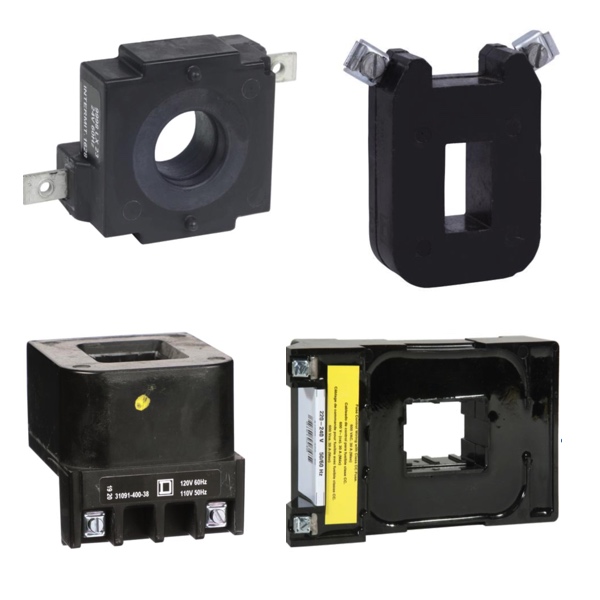Starter Replacement Coils

Contactors are electrical devices that are used for switching an electrical circuit on or off. They are considered to be a special type of relay and are most commonly used for controlling electric motors. The basic difference between a relay and a contactor is that the contactor is used in applications with higher current carrying capacity, while a relay is used for lower current applications. Contactors typically feature multiple contacts which are normally open and provide operating power to the load when the contactor “coil” (electromagnet) is energized.
Coil activation can be manual or automatic. Manual activation happens when a button is pushed or switch is flipped. Automatic activation happens when a sensor or timer is switched under preset conditions. When the coil is activated or energized, a magnetic coupling occurs between the contacts and contact carrier, allowing them to stay together and current to flow to the motor or load. When the system is shut-off by de-energizing the coil, a spring causes the contacts to separate and stop the flow of power through the contacts, turning off the motor or load.
Motor Control Basics
Motor control allows operational control of electrical motors in various environments.
Motor control circuits provide a safe way to operate electrical motors. Back when motor control circuits were in their infancy, it would have been common to see a simple disconnect switch that would be used to turn on and off a motor. Depending on the size of the motor and how much voltage was required, operating this disconnect would have been dangerous, with a very high possibility of arcing or electrocution. Not to mention that when the disconnect was actuated, the large amount of inrush current would have damaged the motor over time.
In today's motor control circuits, there are a few common pieces of hardware.
A circuit breaker is used to protect the motor and any hardware downstream. A contactor and an overload relay are connected together and function in tandem to allow for remote and safe operation of the motor. The contactor functions much like a relay, allowing for a smaller electrical circuit to remotely close the motor contacts, starting the motor. The overload relay is designed to protect the motor in the case of a prolonged overcurrent event. These two devices are wired in series, so that if the overload relay detects an overcurrent event, the contactor will open the motor contacts, shutting off power to the motor.
The other two most common types of motor control hardware are a soft starter and a Variable Frequency Drive (VFD).
Both of these devices function in a similar way to the motor circuit with some added functions. The soft starter is designed to reduce large inrush current to the motor upon startup. This “soft starting” of the motor will prolong its life and allow for safer operation. The VFD performs the soft start functions, but also allows for speed control of the motor. This speed control is critical in many different environments and has made VFDs one of the most common and safe to use motor control circuits today.

